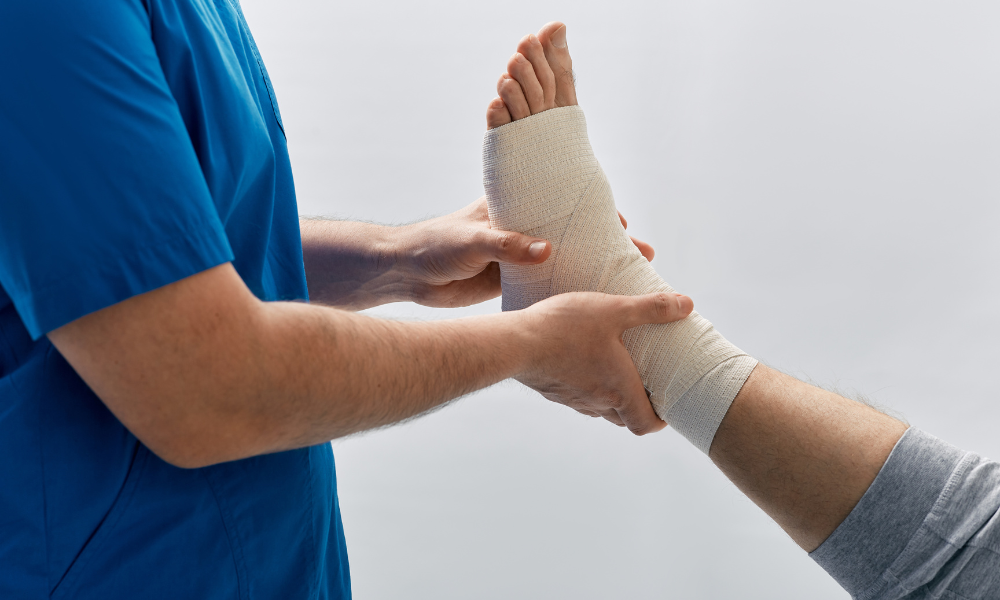When it comes to car accidents, not all pain comes from the crash—some of it comes from the paperwork. In Canada, the minor injury cap limits how much money for pain and suffering, or even for actual costs, that you can get for certain injuries.
In this article, we’ll discuss the basics of these caps, along with the different ways a personal injury lawyer can help you along the way. This guide can be used by injured people who want to know about this cap and by lawyers when helping their clients.
What is a minor injury cap in Canada?
Minor injury caps, as used in personal injury cases in Canada, is the maximum amount of damages—i.e. for pain and suffering or for actual damages—that a person can claim for minor injuries. This is set by provincial statutes and gradually increases every year to adjust for inflation.
As an effect, there’s no similar way on how these caps are treated across Canada. With this, it’s important to consult with a personal injury lawyer right away to know how the cap applies in your own province (or if there’s one).
One province that has its own minor injury cap is Nova Scotia. Learn more about this province’s cap with this video:
If you need help with your own personal injury claim, reach out to the best personal injury lawyers in Canada as ranked by Lexpert.
General damages vs. special damages
Knowing the differences between general and special damages is important, as it’s related to the application of provincial minor injury caps:
- general damages: the injured person’s non-financial losses, such as for pain and suffering and mental distress
- special damages: the injured person’s actual monetary losses, such as medical expenses and lost income
In most provinces, the cap only applies to the general or non-pecuniary damages that can be recovered by the injured person. As such, it does not affect the pecuniary or special damages that the injured person can recover.
How does a minor injury cap work in a personal injury claim?
Each province in Canada has its separate minor injury caps, although there may be some similarities. These amounts are set out in their own provincial laws, which also define what a minor injury is and how the cap applies, among other details.
What is a “minor injury”
Of course, this cap will only apply if the injuries sustained by a person are minor ones, as defined by provincial statutes. The most common minor injuries, for which the cap applies to, are:
- sprain
- strain
- whiplash-associated disorder
Some provinces add more to the list of what constitutes a minor injury under their laws.
However, as will be discussed below, the cap will not apply to a minor injury that falls as a serious impediment. This means that in figuring out whether the cap applies it’s not only enough to look if the injury is a minor one, but also if it’s considered as a serious impediment.
In addition, the definition of minor injury under a provincial law may not be exhaustive, letting the courts evaluate what is and is not considered a minor injury. For this, the question becomes factual, requiring the injured person to prove that their injury is not a minor one, if they want to get benefits above the cap.
Differences from each province
Again, the minor injury caps apply differently in every province. Some provinces don’t even have one within their jurisdiction. Below are the discussions and some general information of the cap in Nova Scotia and Ontario:
Minor injury cap in Nova Scotia
In Nova Scotia, the minor injury cap does not apply to special or actual damages that the injured person can claim; it only affects the general damages for the injury itself. Examples of special or actual damages that an injured person incurs due to the minor injury are:
- medical costs
- rehabilitation expenses
- employment losses
Most provinces use a legal framework the same as Nova Scotia’s: a cap on damages for minor injury only applies to general damages, not for special damages.
The Nova Scotia’s Insurance Act (NSIA) and its Automobile Accident Minor Injury Regulations (AAMIR) defines a minor injury as any of the following:
- sprain: injury to one or more tendons or ligaments, or to both tendons and ligament
- strain: injury to one or more muscles
- whiplash-associated disorder injury: either or both neurological signs that are objective, demonstrable, definable and clinically relevant; and/or a fracture to the spine or a dislocation of the spine
Minor injury cap in Ontario
We then must compare Nova Scotia’s cap with how Ontario’s cap works. Under Ontario’s Statutory Accident Benefits Schedule (SABS) and Minor Injury Guideline (MIG), a minor injury is one or a combination of the following:
- sprain
- strain
- whiplash-associated disorder
- contusion
- abrasion
- laceration
- subluxation
- any clinically associated sequelae of these injuries
As to the amount of the cap, the MIG says that for a minor injury’s medical and rehabilitation benefits, a $3,500 cap would apply. On the minor injuries covered by the cap, Ontario’s laws list more injuries.
While almost all provincial minor injury caps apply only to general damages, Ontario’s cap seems to refer only to actual or special damages. These are just some of the nuances of these caps in every province. This highlights the importance of consulting with a lawyer about your specific case.
How much is the minor injury cap in Canada?
While some provincial laws may have set a fixed amount of minor injury cap, it's usually adjusted every year due to inflation. Below are the caps of the provinces which have them, as of 2024:
|
Province |
Minor Injury Cap |
|---|---|
|
Alberta |
$6,061 |
|
British Columbia |
$5,500 |
|
Manitoba |
$10,402 |
|
New Brunswick |
$9,513.14 |
|
Nova Scotia |
$10,402 |
|
Ontario |
$3,500 |
|
Prince Edward Island |
$9,358 |
For some provinces that do not have an explicit cap, there may be other deductibles that apply. An example is Newfoundland and Labrador, which has a $5,000 deductible on general damages in lieu of a cap. A deductible works differently with the cap; in case of a deductible, any amount of damages is not limited, but will be deducted with by the fixed amount.
Watch this video to learn more about the minor injury caps in Nova Scotia, New Brunswick, and Prince Edward Island:
To know if your claim for personal injuries is capped, consult with the Lexpert-ranked best personal injury law firms in Canada.
When does the minor injury cap apply?
As a summary, here are the factors to look at to know when the minor injury cap would apply:
-
within the meaning of minor injury: first and most basic thing is that the injury should be a minor one and should fall within its meaning as given by the provincial law or regulation
-
year the injury happened: because the cap is adjusted every year, the cap that will apply is based on the year that the injury happened and not when the case was filed in court
When would the minor injury cap not apply?
However, even if the factors above are present, there are some instances where the minor injury cap would still not apply to a given case. Common law would tell us that the burden of proving that the injury is not a minor one—thus, the cap should not apply—is on the injured person. It’s also important that the claim to be exempt from the cap and must be supported by evidence.
Injury is a serious impairment
A minor injury cap does not apply when the injury is already considered as a serious impairment, even though it may be considered as a minor injury.
For instance, the NSIA says that these minor injuries should not result in a serious impairment, because the cap does not apply to serious impairments. Under NSIA’s AAMIR, a serious impairment is a physical or cognitive function impairment, which meets all the following criteria:
-
injury results in an inability to perform either or both the following:
- the essential tasks of employment or education, even after efforts to accommodate the impairment and to use the accommodation
- the normal activities of injured person’s daily living
- injury has been ongoing since the accident
- injury is expected not to improve substantially
Also, in Ontario, the MIG will not apply to an injured person whose injury was initially diagnosed as a minor one but eventually turned out as a serious impediment.
While other provinces may have similar definitions of what a minor injury or a serious impediment is, it’s still important to consult with a personal injury lawyer. They’ll be able to guide you as to whether your injury is a minor one or is already considered a serious impairment.
Non-minor injury is proved by evidence
To be exempt from coverage of the minor injury cap, there must be sufficient evidence proving that the injured person is entitled to an amount above the cap. This will once again depend on the applicable provincial law to prove the exemption.
By way of example is Ontario’s MIG. The MIG says that even if the impairment is predominantly a minor injury, it will not come under the MIG if:
- there's compelling evidence provided by the injured person’s health practitioner
- the evidence proves a documented, pre-existing medical condition before the accident
- applying the cap will prevent the injured person from achieving maximal recovery
The rationale behind this is that applying the cap is clearly an injustice to the injured person. In this case, since the accident aggravated the pre-existing medical condition, the injured person’s recovery would be slower. The injured person would then definitely need benefits larger than the capped amount.
This just shows, as the MIG itself highlights, the importance of documenting every medical step that a person takes, not just after an accident, but even before one can happen.
Minor injury cap: a pain that can be overcome
The minor injury cap is a limit set by provincial laws in Canada on how much a person can claim general damages for minor injuries. Each province has its own rules, amounts, and definitions, so it’s important to know how the cap works in your area. Some provinces define minor injuries as sprains, strains, or whiplash, and adjust the cap amount every year. The cap may not apply if the injury leads to serious impairment or if there’s enough evidence to prove it’s more than a minor injury. To understand how the cap affects your case, it’s best to consult with a personal injury lawyer in your province.
Check out our Legal FAQs page for more articles on personal injury claims, in relation to the minor injury cap in Canada.




